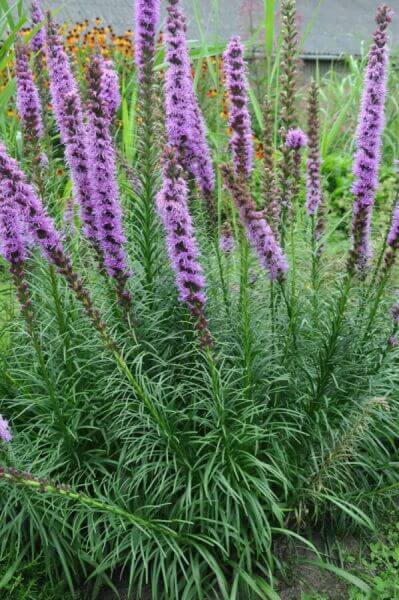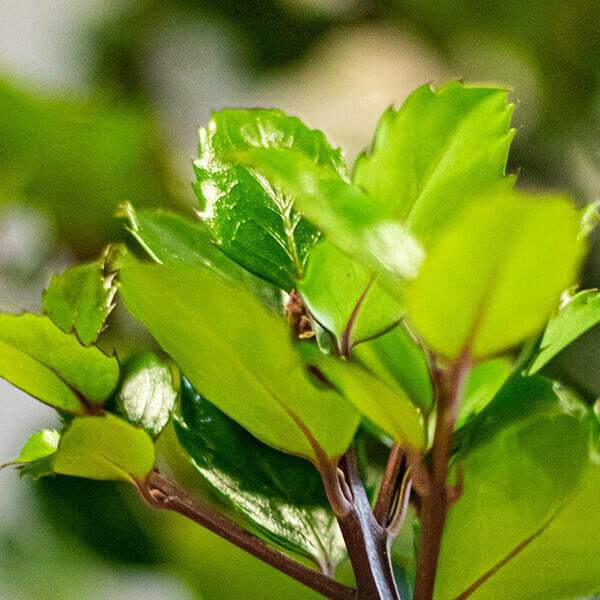Hedging Plants For Wildlife Friendly Gardens
Hedging Plants For Wildlife Friendly Gardens
Blog Article
Best Hedging Plants For Flowering Hedges
Improve your garden's allure with lush hedge ranges such as Yew (Taxus), Thuja, Laurel, Photinia, and Bamboo, celebrated for their structural integrity and ecological benefits.
Yew and Thuja supply evergreen coverage and winter strength, while Laurel offers fast development and broad, fragrant leaves.
Photinia adds seasonal appeal with its vibrant red foliage, and Bamboo provides a low-maintenance, tranquil ambiance.
These hedges enhance air quality, lower noise, and produce tranquil, personal spaces.
Proper planting, spacing, and upkeep make sure vigorous growth and environmental consistency.
Explore how these lush varieties can raise your garden's appeal and wellness.
Key Takeaways
Transform Your Garden With Lush Hedge Varieties
- Select Yew for its thick, evergreen development and unparalleled longevity.
- Select Laurel for its quick development and broad leaves, making sure quick privacy.
- Choose Photinia for its dynamic seasonal foliage, which turns a striking dark red.
- Use Bamboo for a low-maintenance, winter-hardy hedge with visual appeal.
- Area plants 2-3 per meter and prune regularly for optimal development and health.
Popular Hedge Plants
When changing a garden with lush hedge ranges, it's necessary to consider popular hedge plants such as Yew, Thuja, Laurel, and Photinia due to their distinct qualities and advantages.
Yew (Taxus) is highly esteemed for its longevity and dense, green growth, making it a prime choice for enduring landscapes.
Thuja is kept in mind for its evergreen foliage and robust winter season strength.
Photinia includes seasonal vibrancy with red leaves that darken with time, developing vibrant visual appeal.
Laurel provides fast growth and fragrant, broad leaves, perfect for fast privacy.
In Addition, Bamboo is an excellent option for atmosphere, providing a low-maintenance, winter-hardy choice that enhances the garden's visual with its classy, swaying walking sticks.
These selections cater to a range of horticultural requirements and preferences.
Benefits of Garden Hedges
Garden hedges use a multitude of advantages, making them a valuable addition to any landscape. These natural barriers are cost-effective to carry out and offer considerable wind protection, boosting air flow and contributing to sound reduction. The thick foliage of hedges like Thuja and Beech makes sure personal privacy by obstructing presence, developing a secluded and tranquil environment.
Hedges likewise play a vital function in microclimate regulation, providing a steady environment that fosters plant development and lessens temperature variations. Their elaborate leaf structures filter toxins, improving air quality and adding to a healthier garden environment.
Moreover, hedges stand out in noise decrease, taking in and deflecting acoustic waves to lower ambient noise levels. This double performance of offering both acoustic and visual privacy enhances the total serenity and visual appeal of any garden.
Planting and Upkeep Tips
For an effective hedge, precise preparation of the planting area is important. Ensure the soil has proper pH and drain to support strong root development.
Area the plants properly for the selected species. Water the hedge frequently during its preliminary development stage, adjusting as needed with seasonal modifications.
Carry out a systematic pest control and disease avoidance method, using chemical or organic treatments when needed. Frequently check for aphids, mites, and fungal infections.
Apply mulch to retain moisture and reduce weeds. Seasonal pruning promotes thick development and air blood circulation, essential for plant health.
Following these guidelines will help you cultivate a lively, well-kept hedge that improves the charm of your garden.
Spacing and Cutting Standards
Spacing and Cutting Standards
Proper spacing and cutting are crucial for cultivating healthy, visually appealing hedges. Adequate spacing ensures each plant receives sufficient nutrients, light, and airflow.
Follow these guidelines for optimal hedge maintenance:
- Spacing: Position hedge plants 2-3 plants per meter to encourage robust development.
- Pruning Strategies: Routine pruning is necessary for keeping desired hedge height and shape. Trim new growth in summer and cut back older wood throughout winter season.
- Seasonal Care: Change trimming schedules and techniques according to seasonal requirements to ensure plant health.
- Hedge Height: Regularly display and cut to preserve the preferred hedge height and achieve consistent aesthetics.
Abiding by these steps will ensure your hedge grows, boosting both the appeal and functionality of your garden.
Choosing the Right Hedge
Picking the Right Hedge
Choosing the appropriate hedge includes assessing factors such as fully grown height, foliage density, and environmental strength. Successful hedge plant selection needs comprehending each species' development attributes and site-specific versatility.
For instance, Yew (Taxus) provides excellent durability and dense development, while Thuja is noteworthy for its winter season durability. Additionally, thinking about upkeep requirements is important; fast-growing species like Laurel or Privet need routine trimming, whereas low-maintenance alternatives like Bamboo or Ivy might be preferable for those looking for very little upkeep.
Ecological aspects such as soil type, light accessibility, and wetness conditions ought to likewise guide the choice process. This cautious approach guarantees the picked hedges will thrive, offering both visual and functional benefits to the garden landscape.
Shipment and Planting Guidance
To guarantee your hedge plants grow, they ought to be provided by specialized carriers and planted promptly upon arrival.
Follow these vital actions for effective planting:
- Soil Preparation: Enrich the soil with raw material to enhance drain and nutrient content.
- Planting Depth: Create a trench twice the width and equivalent to the depth of the root ball.
- Watering Strategies: Water thoroughly after planting, keeping the soil regularly wet but not saturated.
- Mulching: Apply a layer of mulch to keep wetness and reduce weeds.
Consumer Assistance and Service
Offered the crucial role of timely assistance in horticultural pursuits, our client support team is offered 6 days a week through telephone, e-mail, and social networks to provide skilled suggestions and promptly resolve any issues. Their devotion to fast action times makes sure client fulfillment by solving questions connected to plant health, optimum planting approaches, and upkeep schedules.

Accessibility
----------------------
Within 24 hours
This thorough support group, reinforced by a stellar 9.3/ 10 customer score, highlights our commitment to improving the gardening experience for each customer.
Regularly Asked Questions
For How Long Does It Take for Hedge Plants to Establish?
Hedge plants generally need one to 3 years to end up being completely established, with the specific period varying by species and growing conditions.
Reliable care throughout this vital period is essential for robust development. Consistent watering, vigilant weed control, and proper fertilizer application are critical in promoting strong root development.
For instance, fast-growing species like Laurel might develop quicker, while slower-growing ranges such as Yew might take longer. Diligent upkeep accelerates the facility procedure, resulting in healthy and thick hedges.
What Are the Finest Hedge Plants for Personal Privacy?
The question of the finest hedge plants for privacy involves evaluating evergreen and deciduous alternatives.
Evergreen hedges like Thuja, Laurel, and Cypress supply year-round protection, guaranteeing continuous personal privacy.
On the other hand, deciduous hedges such as Beech offer seasonal privacy, shedding leaves in cooler months.
Key maintenance pointers for privacy hedges include routine trimming, fertilizing in spring, and correct spacing-- usually 2 to 3 plants per meter.
Additionally, constant watering and persistent weed removal are important for promoting healthy, dense development.
Can Hedge Plants Attract Wildlife to My Garden?
Yes, hedge plants can bring in wildlife to your garden by offering essential advantages like shelter, food, and nesting sites, consequently enhancing regional biodiversity. For instance, yew, holly, and laurel are exceptional for attracting birds, while ivy supports a range of insects.
However, it is necessary to note that there are some downsides, such as increased maintenance to handle bugs and regular maintenance. Carefully choosing and keeping hedge varieties can help stabilize these downsides and benefits, ultimately cultivating a vibrant and sustainable environment in your garden.
Are There Any Flowering Hedge Plants Available?
Yes, there are flowering hedge plants offered that can boost the beauty of your garden.
For example, Elaeagnus, likewise understood as Olive Willow, produces aromatic white flowers in the fall, including a touch of beauty.
Photinia, another popular option, showcases lively red leaves that mature into a rich green, producing a vibrant visual result throughout the seasons.
To make sure these plants thrive, it's vital to practice appropriate pruning strategies and seasonal upkeep, such as cutting brand-new growth in the summer and cutting back in the winter.
These steps will help preserve the health and aesthetic appeal of your flowering hedges.
How Do I Prevent Insects in My Hedge Plants?
To prevent bugs in hedge plants, utilize natural pest control approaches and keep appropriate hedge care. Introduce beneficial insects like ladybugs, which prey on harmful pests, to produce a well balanced environment.
Frequently inspect your hedges for indications of invasion and without delay get rid of any affected parts to prevent the spread. Article source Guarantee the health of your hedges by using well balanced fertilizers and supplying sufficient water.
Use mulching to keep soil moisture and correct spacing to lower plant stress and promote robust growth. These practices collectively assist in lessening bug concerns and maintaining a healthy hedge.
Conclusion
In essence, picking the right hedge varieties such as Yew, Thuja, and Laurel can change any garden into a serene haven. These plants supply year-round greenery, improve visual appeal, and offer practical benefits like sound decrease and wind security.
Appropriate planting methods, precise spacing, constant watering, and seasonal cutting are vital for optimum growth.
Trusted delivery services and skilled customer support guarantee a seamless experience from purchase to planting, making it simpler than ever to elevate your outdoor space.
Garden hedges use a wide range of benefits, making them an important addition to any landscape. These natural barriers are cost-efficient to execute and provide significant wind protection, enhancing air blood circulation and contributing to noise decrease. The dense foliage of hedges like Thuja and Beech ensures personal privacy by obstructing presence, producing a secluded and tranquil environment.

Pruning Techniques: Routine pruning is necessary for preserving desired hedge height and shape. Cut brand-new growth in summer and cut back older wood throughout winter.
Report this page